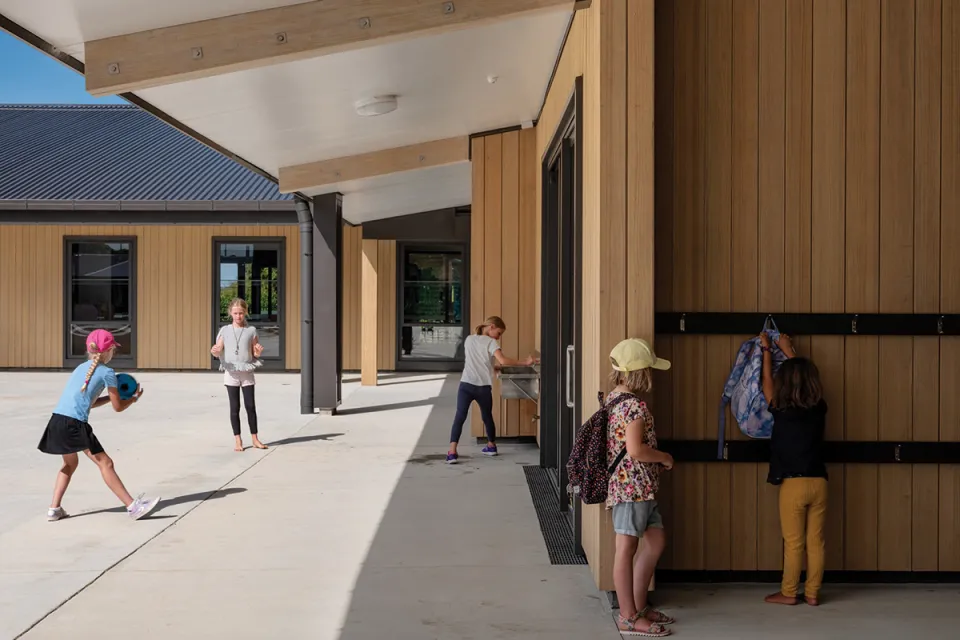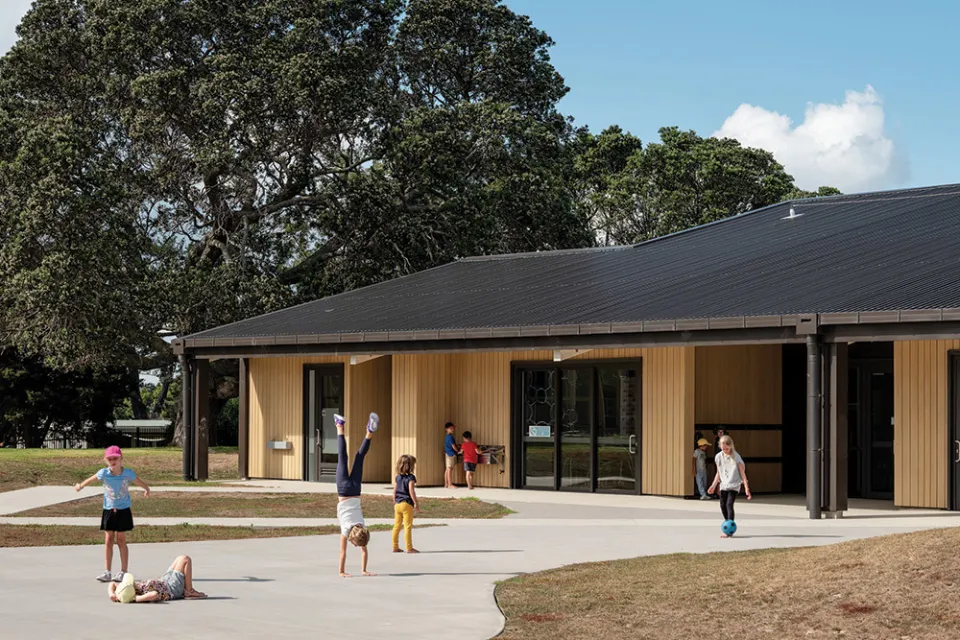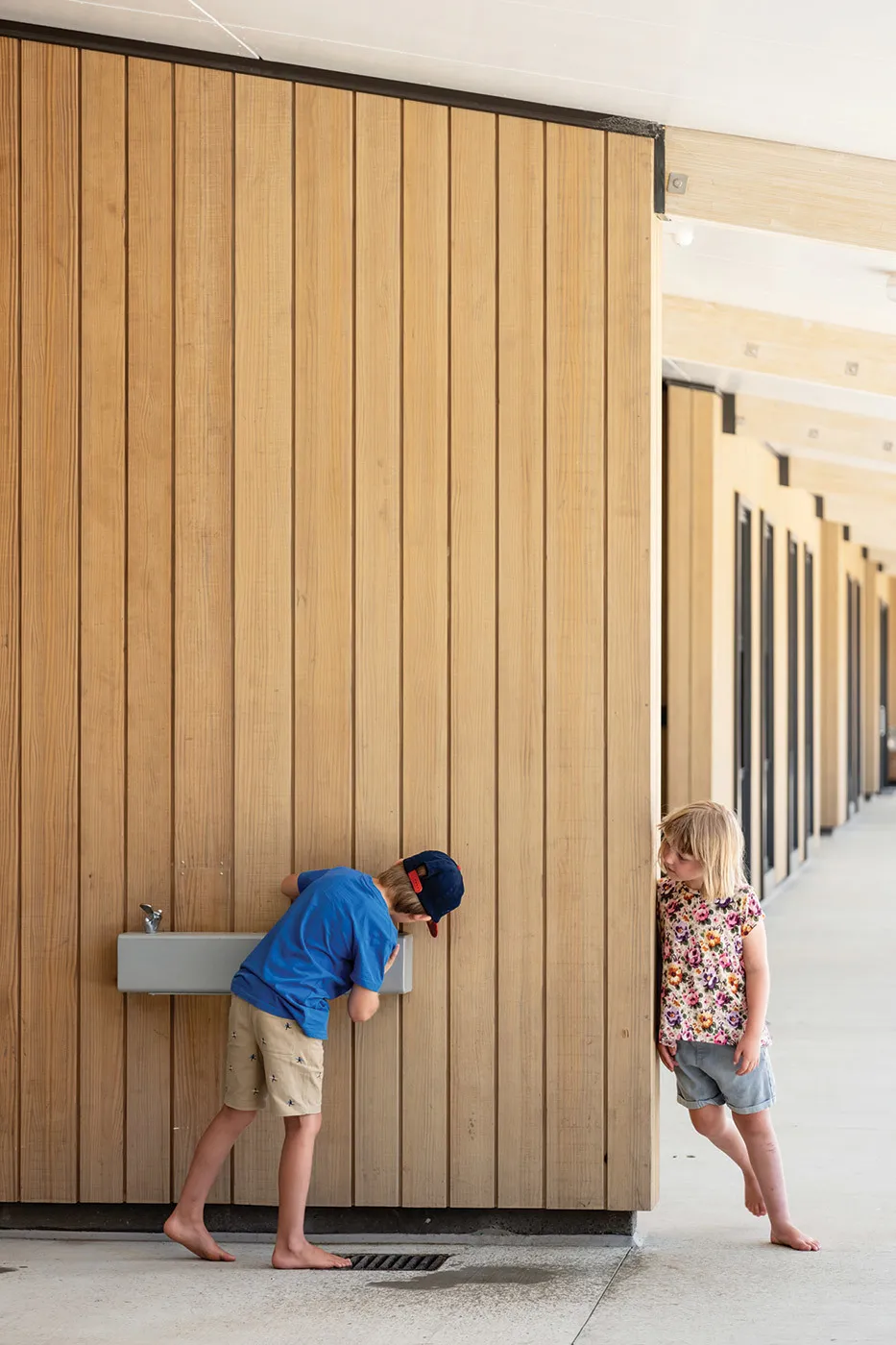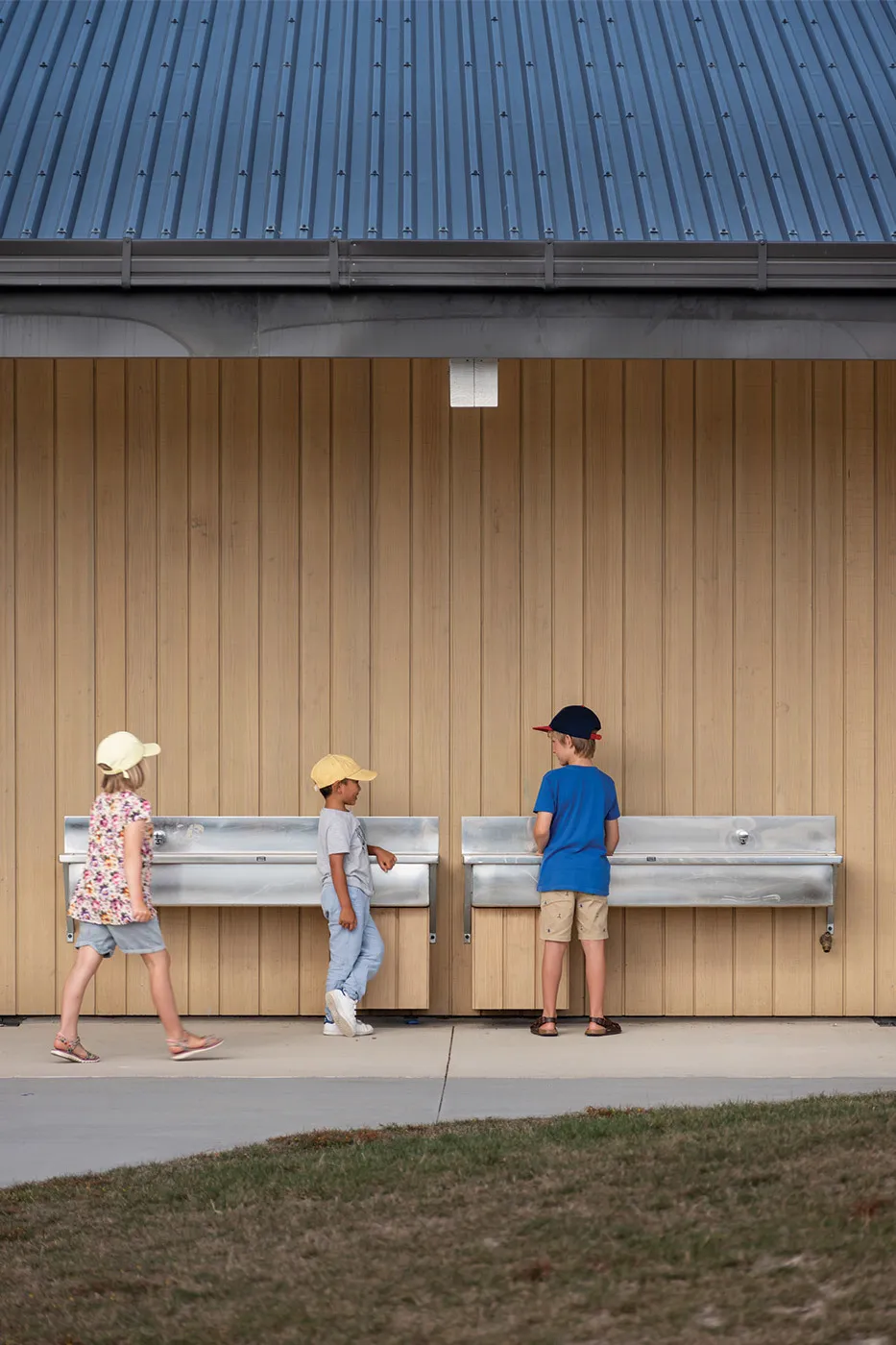-
About
-
Products
- By Timber Product
- Cladding
- Decking
- Joinery
- Screening
- Panelling
- View all
- By Application
- Exterior Cladding / Siding
- Exterior Rain Screen
- Exterior Roofing
- Interior Walls & Ceilings
- Soffits
- Screening, Fins & Battens
- Windows, Doors & Joinery
- Posts & Beams
- Accessories
- Coatings
- Fixings
-
Resources
- By Resource Type
- Technical Data Sheets
- Guides & Manuals
- Technical Articles
- Profile Drawings
- View all
- How To
- How to Specify
- How to Install
- How to Maintain
- Projects
- Contact
The Benefits of Timber in Education
Humans have an innate need to connect with the natural world. Being outside among trees and greenery has been proven to have a positive effect on our physical and mental health.
The next best thing is bringing natural materials inside and using them for our buildings - and this is something schools around the world are seeing as beneficial for the wellbeing of their students.
Benefits for learning, creativity and wellbeing
For young children especially, hands-on connections with nature spark curiosity and discovery, both of which are important for learning, and older children and adults will also benefit from having natural materials around them.
Studies have also shown that wood lined walls improve air quality by moderating humidity. This is important in schools for health reasons but also because air quality has been shown to increase productivity.
A 2002 study on the ‘Effect of healthy workplaces on well-being and productivity of office workers’ demonstrated that productivity was reduced by an average of 12% in offices with dissatisfactory air quality.
Bringing nature into schools
Schools are generally stressful places, and for children, excessive exposure to stress hormones can result in mental health issues, lower the age of puberty onset and cause obesity. Making school a less stressful place can have long lasting positive effects for students and for society in general.
Those who spend time in timber interiors report and show an improvement in emotional state and readiness of self-expression, which in turn has an effect on the mental health of occupants.
A 2010 study of responses from 119 students in wood and non-wood offices before, during and after being asked to complete a stressful task, indicated lower stress in subjects in the wood office compared to the non-wood office.
Modern schools are not blind to these benefits and many have begun to incorporate as much outdoor learning time as possible and to use natural materials in their buildings, in an attempt to bring the natural connection into the classroom and school grounds.
To date, four New Zealand schools and one kindergarten have used Abodo timber products for their claddings and interior designs:
This move towards the use of an FSC® certified timber product also exemplifies the direction New Zealand schools are taking towards becoming beacons of sustainability, something that is echoed in educational facilities around the world.
Making wise choices for the future
As well as increasing physiological wellbeing, the use of timber in building can also help with anxiety. Many young people are concerned with the state of the natural world and are well versed on the issues that surround us and how we can solve them, especially climate change.
Wood is the only renewable building material and a long-term store of carbon, with 50% of the dry weight of wood embodying carbon, which remains locked in for the life of the product.
Production of timber building materials is low energy and releases minimal CO2 into the atmosphere. Using FSC® certified timbers like Abodo, and educating students about this certification, can provide proof that their school cares about sustainability and that positive steps are being made to improve built environments for the benefit of the planet, thus reducing anxiety about the future.
Abodo Vulcan is verified to store more carbon than is used in its production, and its use in schools is sure to be something for students to be proud of.




